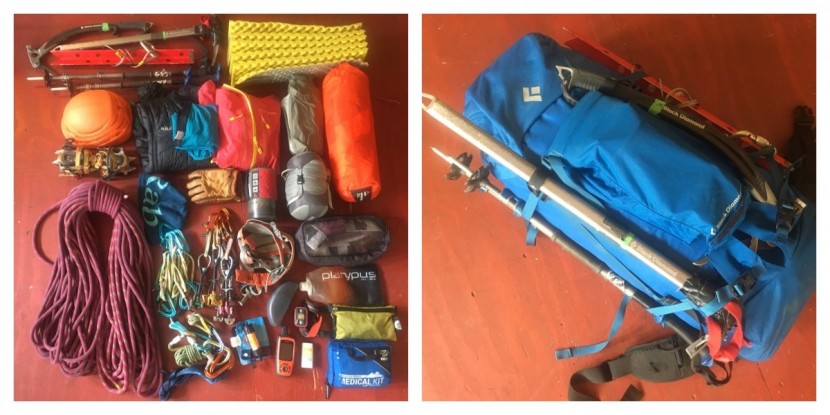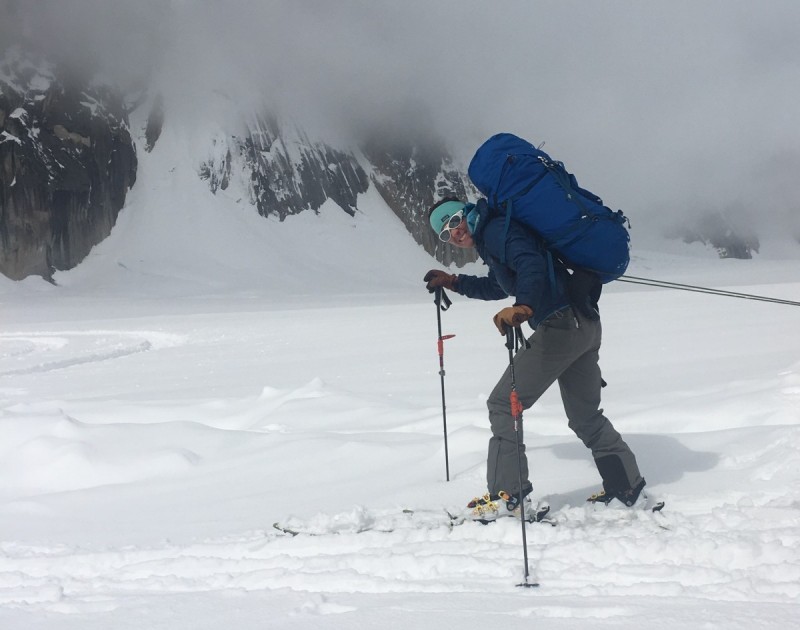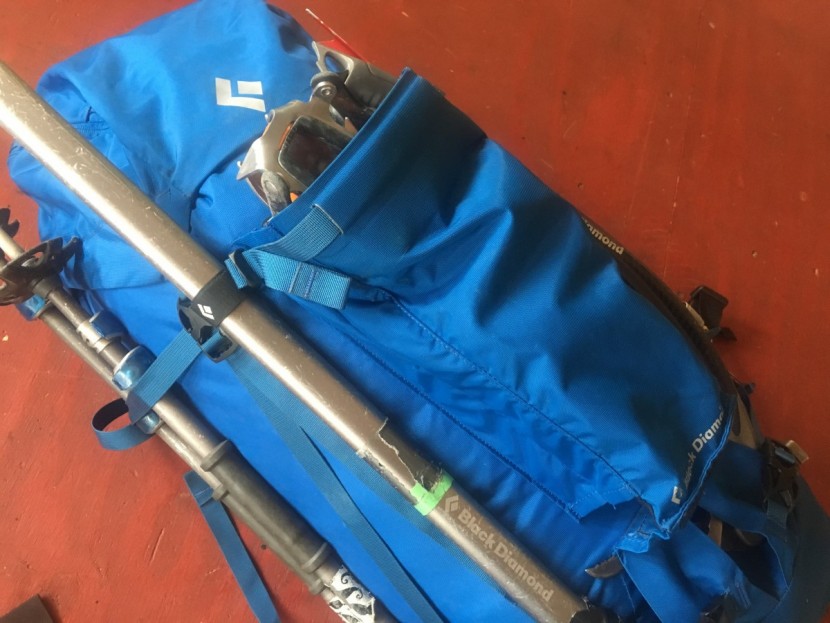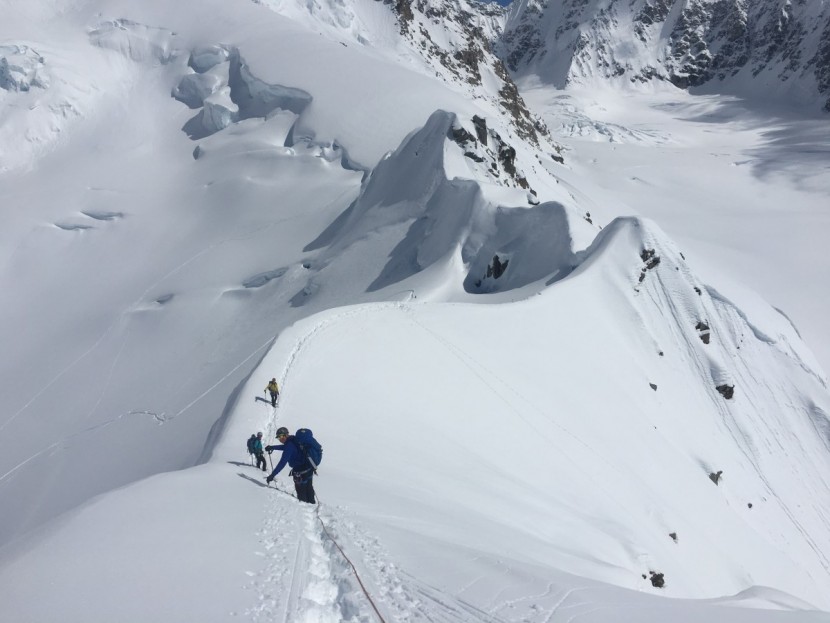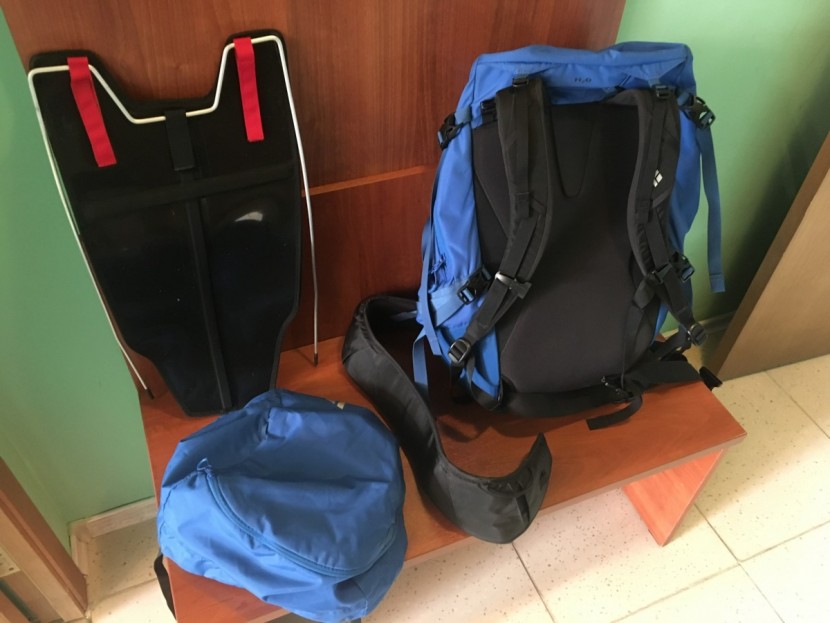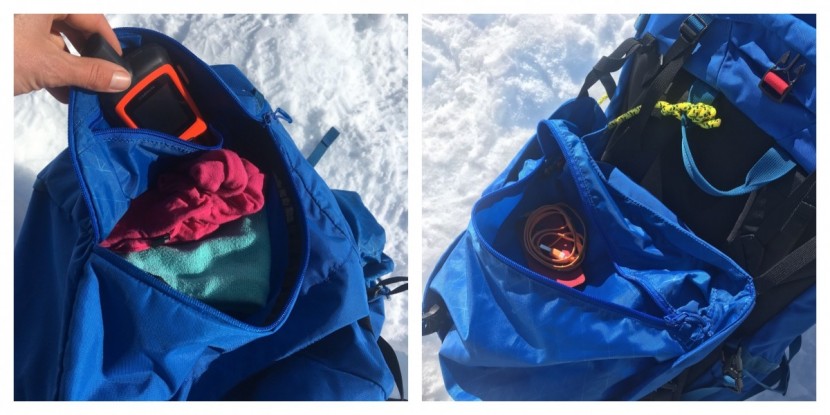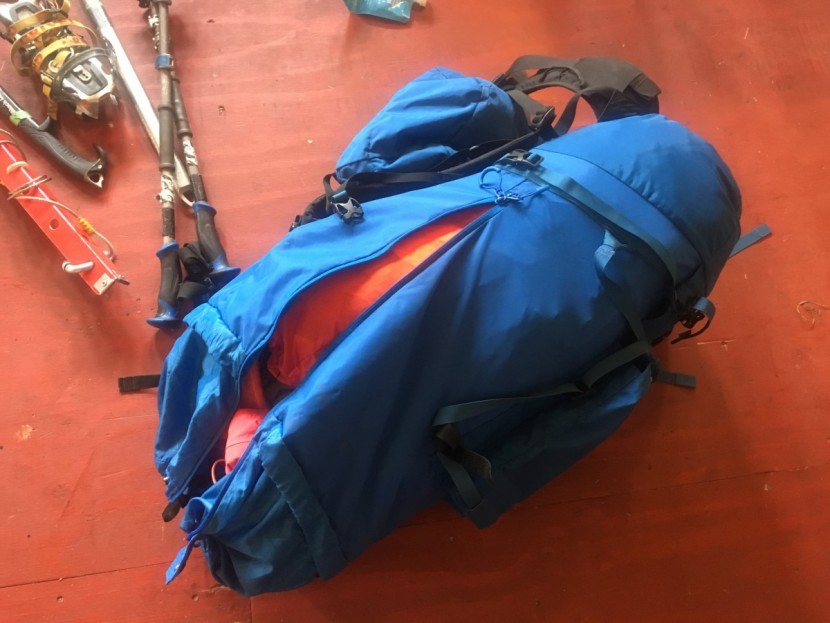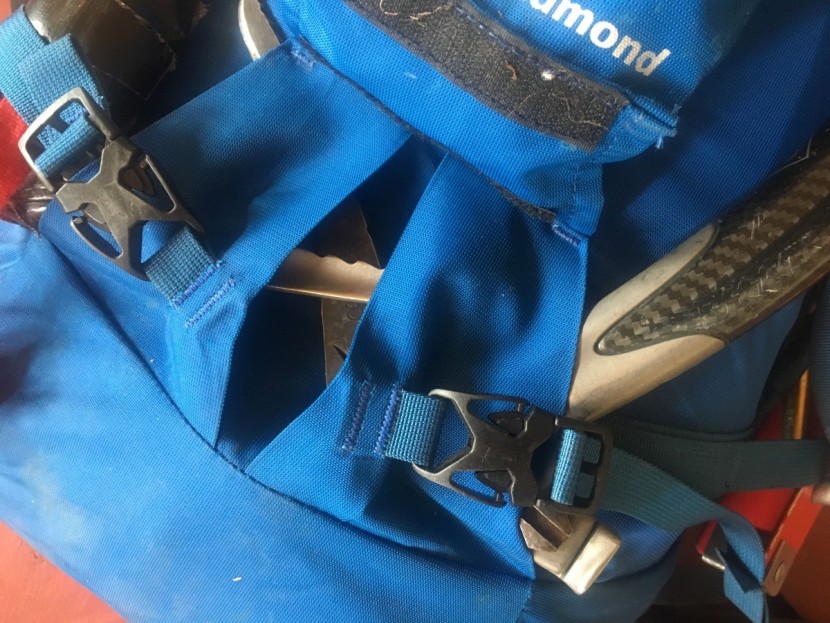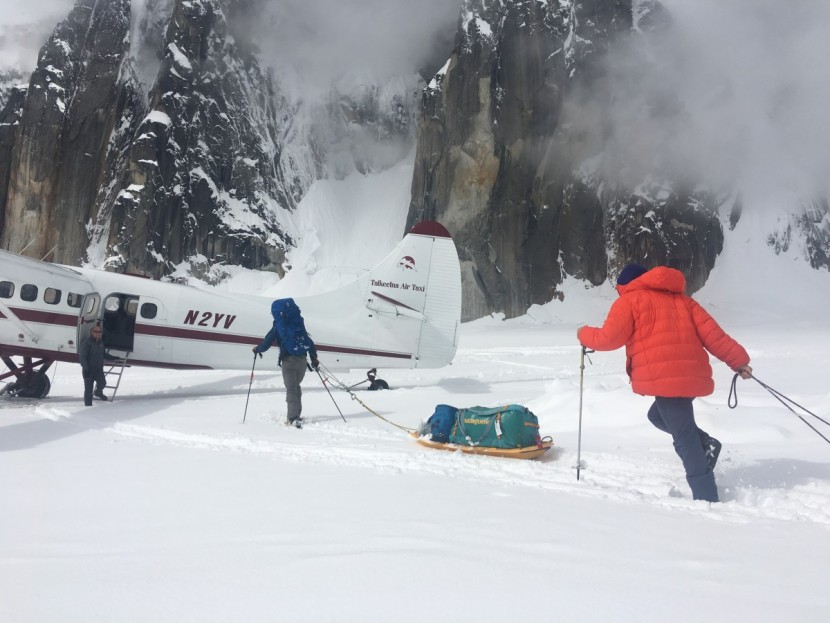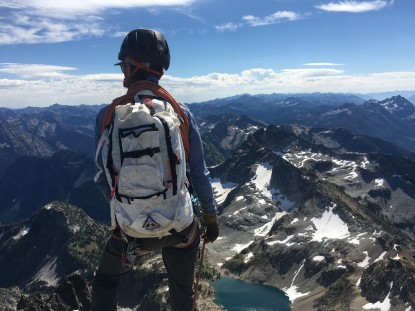Black Diamond now only offers the Mission 75 in black and blue (pictured above). The pack otherwise remains the same as the version we tested below.
October 2019Black Diamond Mission 75 Review
Our Verdict
Our Analysis and Test Results
The Mission 75 is a solid performer across all of our metrics. It is designed for bigger climbs and longer trips, but can still hold its own against smaller, lighter packs. Though we measured the volume at 70L with our ping-pong ball volume test, we still found plenty of room for our test kit.
Weight-To-Volume Ratio
The Mission 75 is a large pack, but that doesn't mean it has to be bulky, cumbersome, or heavy. This pack still ranks well above average in this review for weight to volume ratio. This is not the best pack for fast-and-light weekend missions. It's better suited to bigger and longer climbs. But, if you're aiming for some bigger mountain objectives in fast-and-light alpine style, this might be your go-to pack.
One of the best packs in this category is a completely different style of pack. The Hyperlite is the strongest performer in the strictest sense — its weight to volume ratio is phenomenal. But at a maximum of 50 liters capacity, it's not useful for the same objectives as the Mission 75. This metric helps to compare these packs on a more level playing field — and the Mission is still a strong competitor.
As pack size increases, it often requires more sturdy materials and overall design. This inevitably increases the weight to volume ratio. The Mission minimizes this cost better than any other expedition pack in our review. Still, it might be more weight than you want if you don't need the volume. We loved this pack for shorter expeditions where we wanted to keep things as light and streamlined as possible.
If you know you're mostly going to be climbing technical objectives or taking shorter trips, you might be much happier with the lightest packs in this review, such as the Patagonia Ascensionist 40 or the Arc'teryx Alpha FL 45. For a fully featured, expandable and easily overstuffed pack, we love the Osprey Mutant 38.
Comfort
Our biggest question in this review was how the Mission would stack up next to its cousin, the Black Diamond Speed 50. We assumed a pack 25 liters bigger would be much less comfortable. Ultimately, the two were similar. When maxed out, however, the Mission can become cumbersome and painful on the shoulders.
We could compress the Mission down to a size that was comfortable and agile enough for more athletic ascents. Then we could turn around and weigh it down with expedition loads, and it was still a little more comfortable than the two expedition packs in this review, the Osprey Xenith 105 and the Gregory Denali 100. This, of course, comes at a cost to volume, so be sure your kit is compact enough to fit.
We would not have imagined preferring a 75-liter pack over a 50-liter pack, but ultimately, we did. Admittedly, the Mission is a 60-liter pack that can be extended to 75 liters, so that helps. And when overstuffing to 75 liters, it is often with bulky, lighter gear such as a big down parka. As such, this pack carries more like a 60-liter pack than a 75-liter pack, even when filled to the brim.
If you can manage a little less volume, we preferred the Osprey Mutant 52 among the larger packs in this review. It retains nearly all of the comfort and features of it smaller 38 liter cousin, without the long term strain on your shoulders.
Durability
The Mission is a very durable pack. It ranks well above average due to the 420 denier nylon fabric used, but that doesn't tell the whole story. When compared with the expedition packs, we found it to be plenty durable to handle the weight and abuse of large, heavy loads. If you're looking for the most rugged expedition pack in this review, check out the Osprey Xenith 105.
The more interesting comparison, however, was with its cousin, the Black Diamond Speed 50. The Speed pack did not hold up as well to heavy loads as the Mission, showing wear on the suspension, and also the fabric. (The Speed has a mix of lighter weight 210 denier and 420 denier nylons.) Since the Mission was still plenty comfortable for climbing, we ultimately preferred it for longer mountaineering trips. In the end, we didn't see a tremendous climbing comfort benefit by trimming down to the 50 liter Speed pack. We think the 40-liter version of the Speed pack is more well balanced and likely a strong competitor for that volume.
Versatility
The Mission 75 earned high marks for versatility. We did not expect it to climb as well as it did on technical routes due to its relatively large size. But this pack carried the weight of an expedition relatively well and then slimmed down very nicely for summit day pushes.
This is a great pack for any mountaineering mission, from expeditions to alpine climbs, ski mountaineering trips, and even for a day of rock climbing at your local crag. We would not enjoy taking this 75-liter pack on a steep multi-pitch rock climb though. For that, you might consider the Mountain Hardwear Scrambler. However, the pack can be stripped down. You can remove the hip belt padding, so you have only a webbing belt, the lid comes off, and the framesheet can be removed, leaving only a flexible foam back panel. In this manner, the pack is lighter and climbs better for summit pushes with just the essentials.
But if you don't see yourself needing 75 liters of capacity, we strongly recommend the Editor's Choice winner, the Osprey Mutant 38. This pack can be overstuffed (carefully and with very lightweight equipment and food) to accommodate trips up to 5 days in length, which is stunning. Then you have one of the most comfortable, nimble, and lightweight packs in this review for the technical challenges of your summit day. If you plan on making a habit of overstuffing the Mutant 38, check out the bigger version, the Mutant 52, a strong competitor for the Mission.
Features
The Mission pack is a relatively simple pack with well-designed features that make sense for its purposes. This is a great pack for longer, multi-day technical routes in the Alaska Range, so we were psyched to have our crampons easily accessible in the external crampon pouch. The side access zipper is also a great addition and made it possible to retrieve items from low in the pack without unpacking all of the contents. This is great when dealing with expedition sized loads that you don't want to unpack on a glacier to find a layer buried near the bottom.
The simple, lightweight side straps accommodate skis in an A-frame carrying style, and you can attach ice axes and ice tools to the front. The picks secure behind the crampon pouch for reduced snagging and more streamlined carrying. We like this system, especially when hauling sleds on expeditions. It reduces the number of snag points on our pack that can tangle the ropes in our system. Sled hauling lines and ropes for glacier travel catch easily if you have anything protruding from your pack when you take it on and off for breaks.
When compared to the expedition packs in this review, we found the Mission to be on par with the Osprey Xenith 105. This is not because it has as many features (the Xenith has many more, in fact) but because the Mission pack is well thought out and streamlined. It has all the features we want it to without becoming cumbersome.
We liked the gear loops on the Mission's hip belt as well. These are great for long glacier walks when you are roped to your teammates. You can clip your crevasse rescue kit to the hip belt to ensure the pack rests more comfortably on your hips. This is also great for ease of access on more technical climbs.
Among the smaller packs in this review, we really liked the Osprey Mutant 38 and the Patagonia Ascensionist 40 for the same reasons. For a different take, you can check out the Arc'teryx Alpha FL 45, which uses a minimalistic webbing hip belt designed to ride above your harness and stay out of the way on summit pushes and when carrying lighter loads. We loved this design.
Best Applications
The Mission 75 is a great pack for expeditions under three weeks or those planning to climb a bigger mountain objective in fast-and-light style. This pack carries heavy loads well and is agile enough for moderately technical, steeper terrain. We liked this pack for year-round ascents of Mount Rainier, as well as longer trips in the Alaska Range. It carries heavy loads well and then trims down enough to inspire confidence on moderate alpine ice and rock objectives. This is an excellent all-around mountaineering backpack.
Value
The Mission 75 is an excellent value. It could handle bigger objectives and longer trips, competing with the 100-liter expedition packs in this review, but it is almost half the price. Then it can turn around a compete with smaller, lighter packs. This backpack gives a lot of bang for the buck.
Conclusion
The Mission 75 was a pleasant surprise for our reviewers. We can get a bit snobbish about bigger packs—and 75 liters is big. But the Mission 75 has the profile of a 60-liter pack, making it competitive with 50-liter packs. And it's able to carry expedition loads nearly as easily as 100-liter packs. We were impressed. For general mountaineering purposes, the Mission will help set you up for success.




